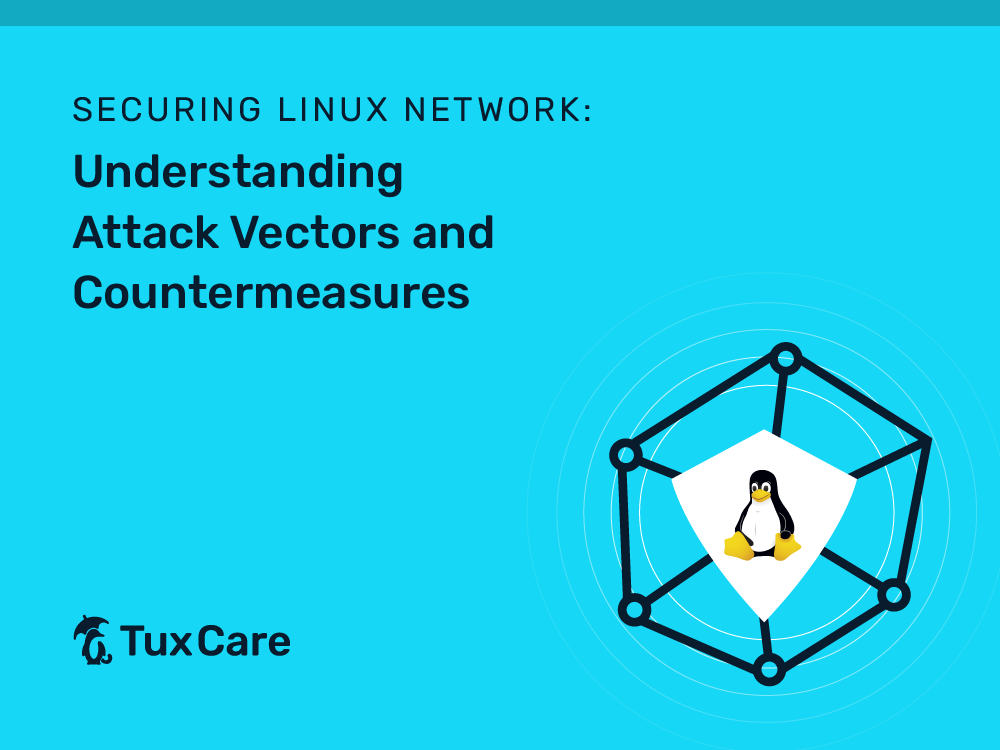Securing Linux Network: Understanding Attack Vectors and Countermeasures
Linux operating systems have become immensely popular among web developers, creating applications in servers, routers, mobile phones, and even some desktop computers. These operating systems are frequently chosen to power databases that house sensitive information. Additionally, substantial computational power is often allocated for their operation. However, such extensive utilization also exposes them to a variety of potential external and internal attack vectors. In this article, we will categorize and delve into some of the most prevalent cyberattack vectors targeting the security of Linux networks, as well as explore strategies to effectively counteract them.
External Attack Vectors in Linux Networks
External attack vectors, in many cases, involve network attacks that exploit vulnerabilities in the implementation of the TCP/IP protocol stack, open ports of internal network applications, and external network packet listeners due to misconfigured network firewalls or vulnerabilities in network software designed for use beyond the computing system. Attacks involving the exploitation of known vulnerabilities in software components and supply chain attacks, where malicious actors target vulnerabilities in third-party components or software that are integrated into the system, represent other significant facets of external attacks.
Fortifying Linux Network Security with Host-Based Firewalls
One of the effective methods to strengthen Linux network security is through a host-based firewall. In Linux kernel-based operating systems, tools like iptables, ip6tables, and arptables have been used for a while. These tools make use of the Netfilter kernel interface to set up rules for filtering packets.
In modern distributions, there’s a more up-to-date network firewall implementation called nftables. This tool uses a new interface that allows loading a simple virtual machine code into the kernel, which is used for handling IPv4, IPv6, and ARP protocols all at once.
Today, the use of nftables is preferable, as iptables will soon not be supported by modern kernel versions. Additionally, the iptables code is much more complex, and the rules it allows to create are noticeably less flexible compared to the rules generated with nftables. Furthermore, nftables provides improved performance, enhancing the resilience of the computing system against Distributed Denial of Service (DDoS) attacks.
Strategies for Defending Against DDoS Attacks
DDoS attacks on Linux networks can have devastating consequences. These attacks involve overwhelming a network, server, or service with an immense volume of traffic from multiple sources, rendering it inaccessible to legitimate users. Linux-based systems, despite their robustness, are not immune to DDoS attacks. Attackers can exploit vulnerabilities, flood network connections, or employ botnets to orchestrate these attacks. In response, Linux network administrators must implement specific DDoS mitigation measures.
To counter DDoS attacks on Linux networks, you can employ several effective methods.
Firstly, implementing traffic filtering and rate limiting at the network perimeter is crucial. This strategy allows you to drop or limit traffic from suspicious or excessive sources, preventing the network from becoming overwhelmed by malicious traffic.
Secondly, leveraging a Content Delivery Network (CDN) can be highly beneficial. CDNs distribute incoming traffic across multiple servers and data centers, effectively dispersing the load and absorbing the impact of DDoS attacks. This ensures that legitimate users can still access your resources even during an attack.
Lastly, considering cloud-based DDoS protection services provided by reputable providers is a prudent choice. These services automatically scale to absorb large-scale attacks, offering a robust defense against DDoS threats.
Locking Down SSH Access
An important attack vector to consider is SSH (Secure Shell). SSH facilitates the establishment of secure, encrypted connections between trusted parties, commonly used for remote server configuration, file transfers, and monitoring. Unfortunately, SSH has also gained recognition as a target for malicious activities. Attackers often exploit SSH vulnerabilities to install cryptocurrency mining software or IoT malware on the target system.
To defend against SSH attacks, it is essential to block root user authentication and disable password-based login, allowing system access solely through key-based authentication. Employ the most secure cryptographic algorithms available, such as cipher: aes256-gcm, mac: hmac-sha2-256, kex: curve25519-sha256, key: ecdsa-sha2-nistp521. Encrypt all private keys with strong passphrases. When changing the server’s public key, it’s crucial for the system administrator to communicate this change well in advance to all users.
Software Vulnerabilities as a Gateway for Ransomware
The exploitation of vulnerabilities in unpatched systems stands out as one of the most pervasive attack vectors targeting Linux network security. Ransomware attacks, for example, targeting Linux-based systems increased by 75% in 2022 compared to the same period in 2021. While Windows ransomware usually infects the target via email, Linux ransomware exploits system vulnerabilities or service flaws.
What is really frightening is that most organizations’ database servers, file servers, and email servers run on Linux. Linux drives most of the US government and military networks, as well as financial and banking systems, and is the most common operating system in the energy and manufacturing sectors. So if an attacker gains access to a Linux environment, he most likely gets access to the most critical systems and data.
Timely security patching is a fundamental defense strategy here. By swiftly addressing known vulnerabilities, organizations can significantly enhance their resilience to cyberattacks, including ransomware, and reduce their attack surface.
At the same time, organizations struggle to patch their Linux systems quickly, as security patching usually requires them to be rebooted. And, considering the critical nature of these systems, maintaining their continuous operations is of utmost importance. The best solution would be live patching technology. It allows us to address vulnerabilities or other critical issues, in real time, without disrupting ongoing operations. KernelCare Enterprise, for example, is the only solution on the market that can live patch all popular Linux distributions, providing a robust solution for Linux network security.
Internal Attack Vectors
Internal attack vectors involve users of time-sharing systems. They can inadvertently or intentionally launch malicious software. By default, operating systems in the GNU/Linux family employ a standard access control system inherited from UNIX. Despite its high effectiveness and user-friendliness, it has a significant drawback: a user who owns a file can grant themselves execution privileges and launch it. An executed process would immediately gain access to all system calls, significantly elevating the risk of successful exploitation of day-one vulnerabilities.
Advanced Access Control Systems
Advanced access control systems, namely SELinux and AppArmor, were created to safeguard against internal threats. These systems come as kernel modules and function in a privileged mode. They extend the built-in discretionary access control system and implement an additional mandatory access control layer.
The SELinux system is used in the Red Hat, CentOS, and Fedora distributions. The AppArmor system was developed by Canonical and is used in the Ubuntu distribution. Thanks to its simplicity, this system can be easily integrated into another distribution.
The SELinux and AppArmor systems allow setting security profiles on individual files. One of the key features of these systems is the filtering of system calls. The administrator of the computing system can define a subset of system calls necessary for the operation of trusted software and prohibit the use of all other system calls. In the event of a buffer overflow attack or remote code execution, the use of specific system calls for carrying out the attacks becomes impossible.
Tackling Privilege Escalation and Daemon Security
Internal attacks often exploit the privilege delegation system, sudo. Poor configuration can lead to significant opportunities for users of the computing system to escalate their privileges.
Key guidelines include ensuring the use of passwords for authentication and limiting membership in the privileged “wheel” group to trusted users only. Additionally, it’s crucial to always keep the sudo system up to date with the latest stable version. If there are any daemons running in the system, they should be executed by separate users with the minimum necessary privileges. This reduces the impact of successful remote code execution attacks. Additionally, mechanisms of containerization can be employed and implemented using systemd, which is present in all modern Linux distributions.
Conclusion
The prevalence of Linux operating systems across a multitude of platforms underscores their significance in today’s technological landscape. However, this widespread usage also exposes them to a range of internal and external threats. The potential risks posed by both user-based actions and external network attacks highlight the need for robust defense strategies. Thus, safeguarding Linux network security is an ongoing endeavor that demands vigilance, adaptability, and the implementation of best practices to ensure a resilient and secure digital environment.



 Documentation
Documentation Login
Login




